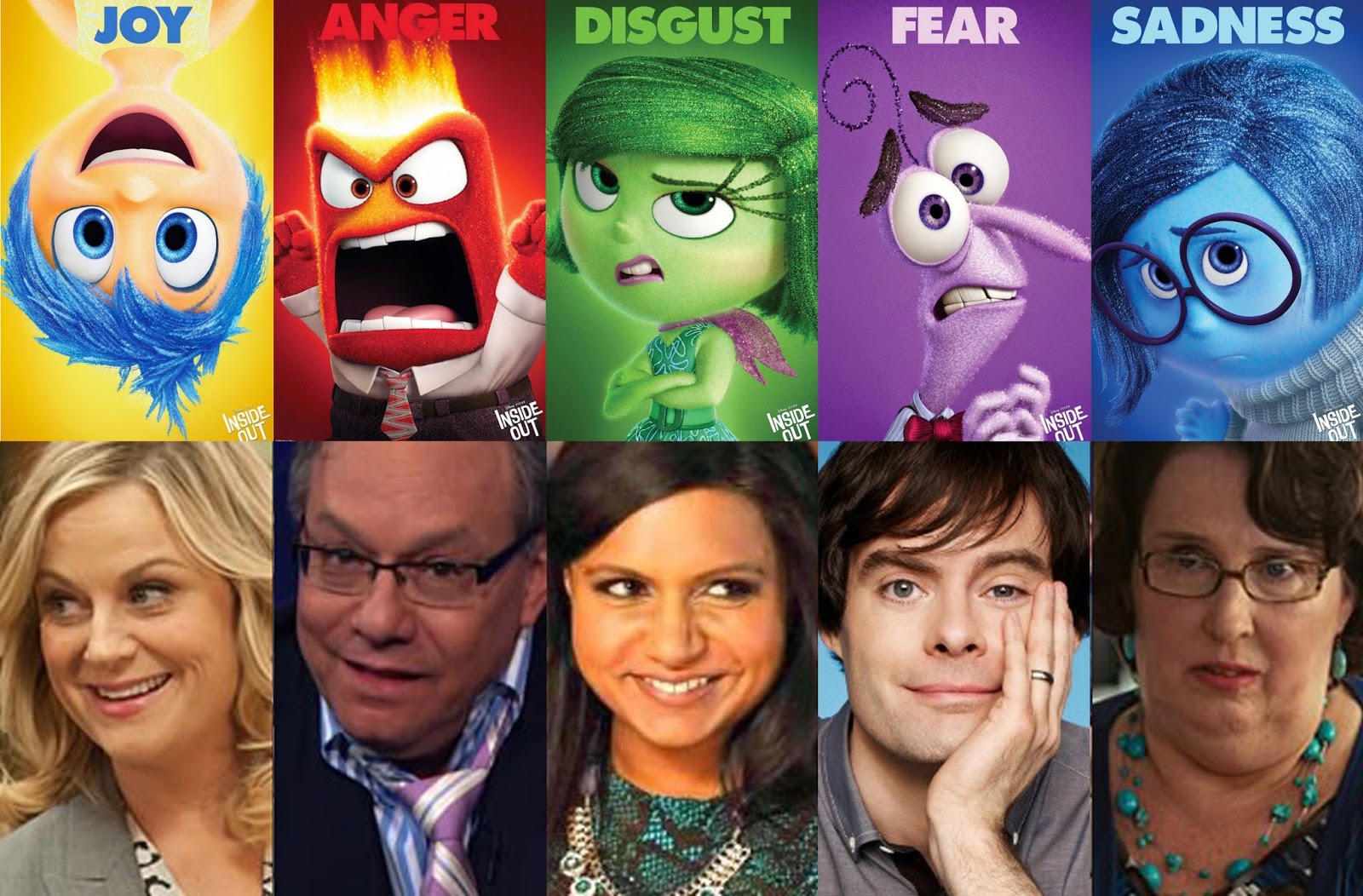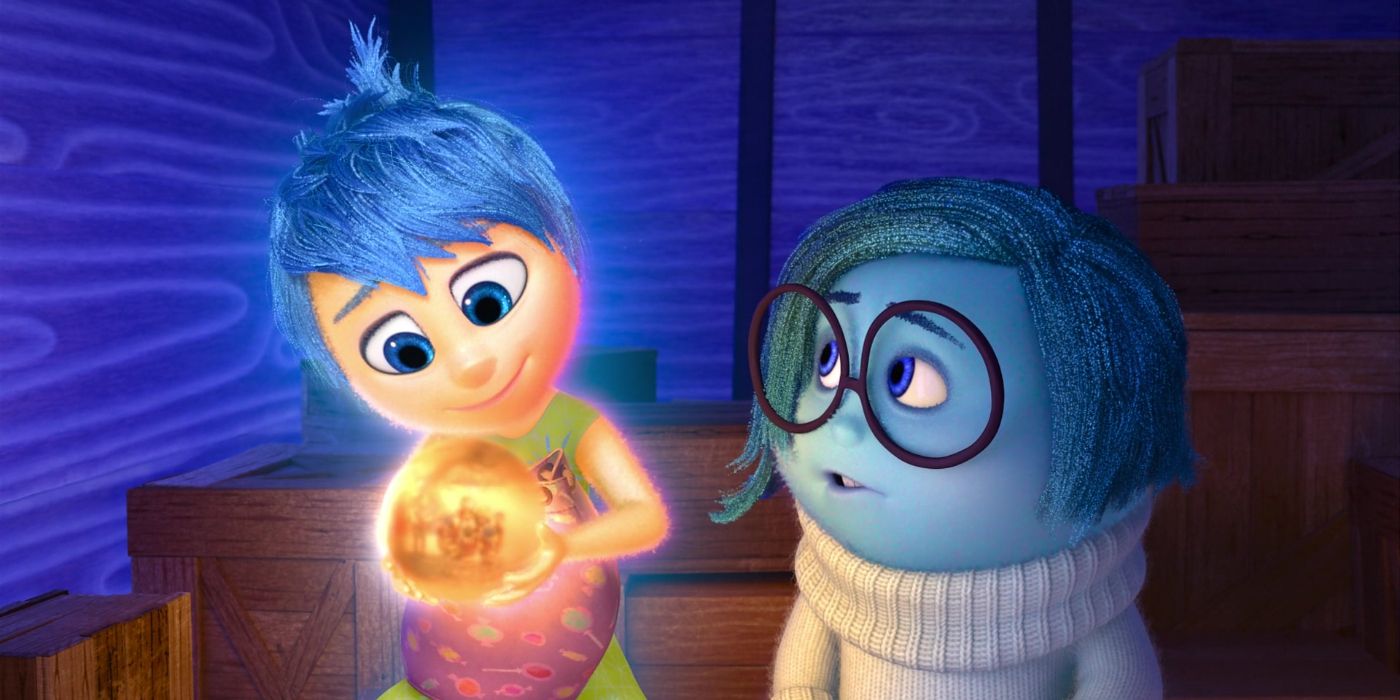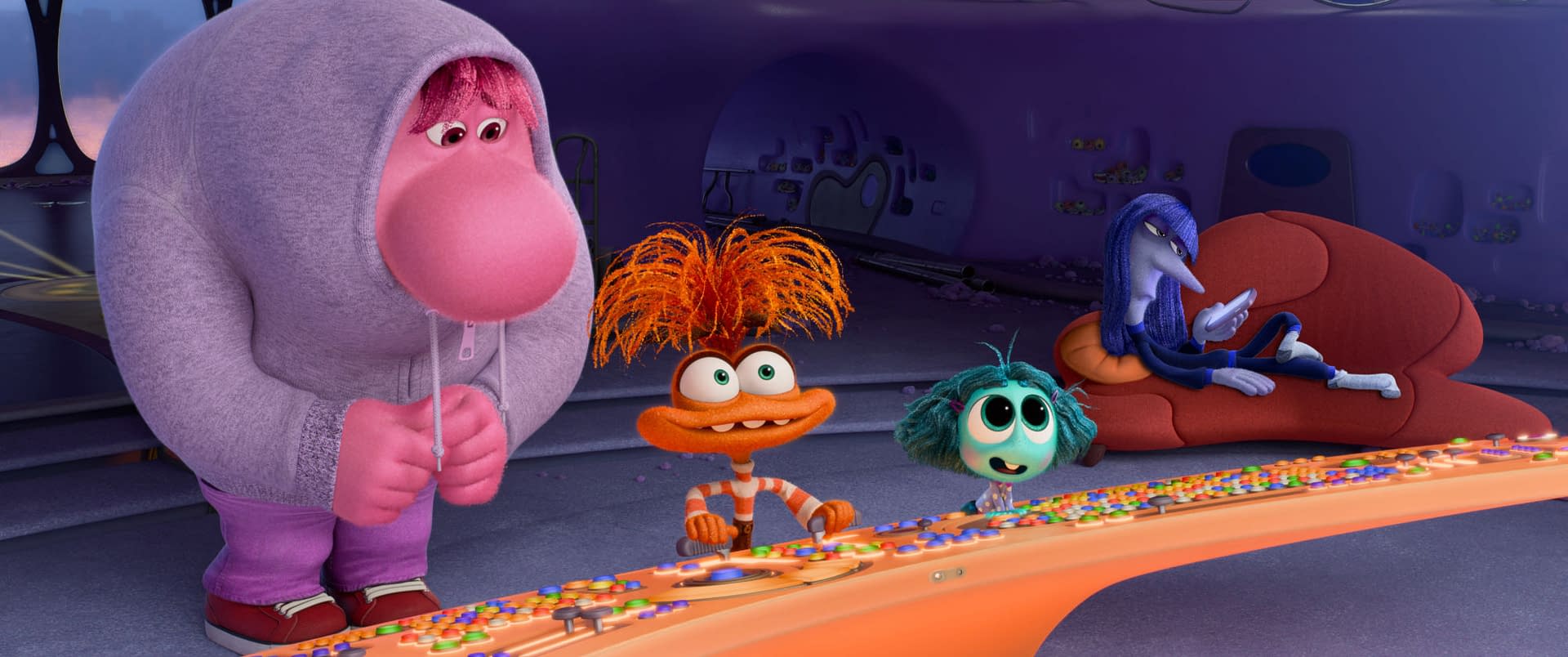When Pixar released Inside Out in 2015, it wasn’t just another animated movie; it was a groundbreaking journey into the minds of its characters. The film’s unique premise—exploring emotions as individual characters living inside a person’s head—captured the hearts of audiences worldwide. But have you ever wondered about the talented voices behind these colorful personalities? In this article, we’ll take an in-depth look at the cast of Inside Out, their real-life stories, and how they brought these emotions to life.
Inside Out is more than just a movie; it’s a celebration of the complexities of human emotions. Each character represents a different aspect of our inner world, and the actors who voiced them played a crucial role in making the film so relatable. From Joy to Sadness, every emotion has a story to tell.
As we dive deeper into the world of Inside Out, you’ll discover not only the voices but also the real-life experiences that inspired their performances. So grab your popcorn, and let’s explore the incredible cast that made this film unforgettable!
Read also:Building Strong Friendships A Guide To Lasting Connections
Table of Contents
- Biography of the Cast
- Amy Poehler: The Voice of Joy
- Phyllis Smith: The Voice of Sadness
- Richard Kind: The Voice of Bing Bong
- Bill Hader: The Voice of Fear
- Lewis Black: The Voice of Anger
- Mindy Kaling: The Voice of Disgust
- Other Notable Characters
- Behind-the-Scenes Insights
- The Impact on Audiences
- Conclusion
Biography of the Cast
Before we dive into each character, let’s take a moment to appreciate the talented individuals who brought them to life. Here’s a quick overview of the main cast:
| Character | Actor | Age | Notable Works |
|---|---|---|---|
| Joy | Amy Poehler | 51 (at the time of release) | Parks and Recreation, Saturday Night Live |
| Sadness | Phyllis Smith | 46 (at the time of release) | The Office, The Break with Michelle Wolf |
| Bing Bong | Richard Kind | 60 (at the time of release) | Mad About You, Inside Job |
| Fear | Bill Hader | 43 (at the time of release) | Saturday Night Live, Barry |
| Anger | Lewis Black | 67 (at the time of release) | Back in Black, The Daily Show |
| Disgust | Mindy Kaling | 36 (at the time of release) | The Mindy Project, The Office |
Amy Poehler: The Voice of Joy
Amy Poehler, best known for her comedic roles in Parks and Recreation and Saturday Night Live, was the perfect choice to voice Joy. Her ability to convey both humor and sincerity made her a natural fit for the character. Joy represents happiness and optimism, and Poehler brought those qualities to life with her energetic performance.
Fun Fact: Poehler was so invested in her role that she visited Pixar’s studio multiple times to ensure her performance aligned with the filmmakers’ vision. Her dedication paid off, as Joy became one of the most beloved characters in the film.
What Makes Joy So Special?
- Joy is the driving force behind Riley’s happiness and positivity.
- She often clashes with Sadness, creating some of the film’s most memorable moments.
- Poehler’s comedic timing adds a layer of depth to Joy’s character, making her relatable to audiences of all ages.
Phyllis Smith: The Voice of Sadness
Phyllis Smith, famous for her role as Phyllis Vance on The Office, might seem like an unconventional choice for Sadness. However, her understated performance perfectly captures the quiet strength of the character. Sadness may seem like the opposite of Joy, but she plays a crucial role in balancing Riley’s emotional spectrum.
Did you know? Smith’s portrayal of Sadness was inspired by her own experiences with grief and loss. This personal connection added authenticity to her performance, making Sadness one of the most touching characters in the film.
Why Is Sadness Important?
- Sadness helps Riley process difficult emotions and find meaning in challenging situations.
- Her presence reminds us that it’s okay to feel down sometimes.
- Smith’s nuanced performance highlights the importance of embracing all emotions, even the difficult ones.
Richard Kind: The Voice of Bing Bong
Richard Kind, a veteran voice actor known for his work in Mad About You and Inside Job, brought Bing Bong to life with his whimsical and heartfelt performance. Bing Bong, Riley’s imaginary friend, represents the innocence and imagination of childhood. His journey in the film is both heartwarming and heartbreaking, leaving a lasting impact on audiences.
Read also:Unveiling The Magic Of Romantic Moments Your Ultimate Guide
Kind’s ability to convey Bing Bong’s playful nature while also capturing his vulnerability made the character unforgettable. His performance serves as a reminder of the importance of holding onto our inner child.
Key Moments with Bing Bong
- Bing Bong’s introduction as Riley’s long-lost imaginary friend.
- His emotional farewell, which tugs at the heartstrings of viewers.
- His role in helping Joy and Sadness return to Headquarters, showcasing his selflessness.
Bill Hader: The Voice of Fear
Bill Hader, a comedic genius best known for his work on Saturday Night Live and the hit series Barry, lent his voice to Fear. Fear is the character responsible for keeping Riley safe by anticipating potential dangers. Hader’s performance captures both the humor and seriousness of the character, making Fear a standout member of the emotional team.
Fun Fact: Hader’s improvisational skills added layers to Fear’s personality, making him more than just a stereotypical worrywart.
What Makes Fear Unique?
- Fear’s constant worrying provides comic relief while also highlighting his protective instincts.
- His interactions with the other emotions add depth to the film’s storyline.
- Hader’s ability to balance comedy and drama makes Fear a memorable character.
Lewis Black: The Voice of Anger
Lewis Black, a veteran comedian and actor, brought fire and brimstone to the role of Anger. Known for his fiery rants on The Daily Show, Black was the perfect choice to voice the character who embodies frustration and rage. Anger’s explosive personality adds tension and humor to the film, making him a fan favorite.
Did you know? Black’s performance was heavily influenced by his real-life experiences with anger management. This personal connection added authenticity to his portrayal of the character.
Why Anger Matters
- Anger’s passion drives Riley to stand up for herself and fight for what she believes in.
- His fiery nature balances out the more subdued emotions, creating a dynamic team dynamic.
- Black’s comedic timing ensures that even the angriest moments are entertaining.
Mindy Kaling: The Voice of Disgust
Mindy Kaling, a talented actress and writer known for her work on The Mindy Project and The Office, voiced Disgust. Disgust represents Riley’s sense of taste and judgment, often serving as the voice of reason in chaotic situations. Kaling’s sharp wit and quick humor make Disgust a standout character in the film.
Fun Fact: Kaling’s performance was heavily influenced by her experiences growing up as a first-generation American. This added a layer of authenticity to Disgust’s perspective on the world.
Disgust’s Role in the Film
- Disgust helps Riley navigate social situations and make informed decisions.
- Her interactions with the other emotions add depth to the film’s storyline.
- Kaling’s comedic timing ensures that Disgust’s moments are both relatable and hilarious.
Other Notable Characters
While Joy, Sadness, Fear, Anger, and Disgust steal the spotlight, Inside Out features a host of other memorable characters. From Riley’s parents to the various memory spheres, each character contributes to the film’s rich tapestry of emotions.
Who Else Should You Know?
- Riley’s Parents: Voiced by Diane Lane and Kyle MacLachlan, they represent the external influences shaping Riley’s emotional landscape.
- The Memory Spheres: These colorful orbs represent Riley’s memories and play a crucial role in the film’s plot.
- The Train of Thought: A literal train that represents Riley’s thought process, adding a layer of whimsy to the film.
Behind-the-Scenes Insights
The making of Inside Out was a labor of love, involving countless hours of collaboration between Pixar’s animators, writers, and voice actors. Director Pete Docter, known for his work on films like Monsters, Inc. and Up, drew inspiration from his own experiences as a father to create the film’s unique premise.
Fun Fact: The film’s emotional core was shaped by Docter’s observations of his daughter’s emotional development. This personal connection added authenticity to the film’s portrayal of emotions.
Key Production Details
- Pixar’s animators spent years perfecting the film’s visual style, ensuring that each emotion was visually distinct.
- The voice actors recorded their performances together, allowing for spontaneous interactions that added depth to the characters.
- The film’s soundtrack, composed by Michael Giacchino, enhances the emotional impact of key scenes.
The Impact on Audiences
Inside Out resonated with audiences of all ages, sparking conversations about mental health and emotional well-being. The film’s innovative approach to exploring emotions made it accessible to both children and adults, creating a universal appeal.
Did you know? Inside Out was praised by mental health professionals for its accurate portrayal of emotions and their role in shaping our experiences. This validation added to the film’s credibility and impact.
Why Inside Out Matters
- The film encourages viewers to embrace all emotions, even the difficult ones.
- It highlights the importance of emotional intelligence in navigating life’s challenges.
- Its universal themes make it a valuable tool for teaching children about their feelings.
Conclusion
The cast of Inside Out played a pivotal role in bringing the film’s emotional depth to life. From Amy Poehler’s vibrant portrayal of Joy to Phyllis Smith’s heartfelt performance as Sadness, each actor contributed to the film’s success. Inside Out is more than just a movie; it’s a celebration of the complexity and beauty of human emotions.
So, the next time you watch Inside Out, take a moment to appreciate the incredible talent behind the voices. And remember, it’s okay to feel all the feels—Joy, Sadness, Fear, Anger, and Disgust included. Share your thoughts in the comments below, and don’t forget to check out our other articles for more insights into your favorite films!


